In the bustling symphony of a kitchen, where pots simmer and pans sizzle, there comes a moment when the trusted tools of culinary creation inevitably show signs of wear and tear.
These faithful companions, once gleaming with the promise of countless meals, now bear the battle scars of a thousand dinners served. Yet, before consigning them to the dusty attic of forgotten cookware, consider the untapped potential that lies within these seasoned vessels.
Like seasoned warriors retiring from the front lines, old pots and pans possess a wealth of stories and possibilities, awaiting a new chapter in their culinary saga. So, let us embark on a journey of transformation, exploring the myriad avenues of creativity and sustainability in repurposing these culinary relics.
From kitchen to garden, from artistic endeavors to charitable contributions, the adventure begins with the question: What to do with old pans and pots?
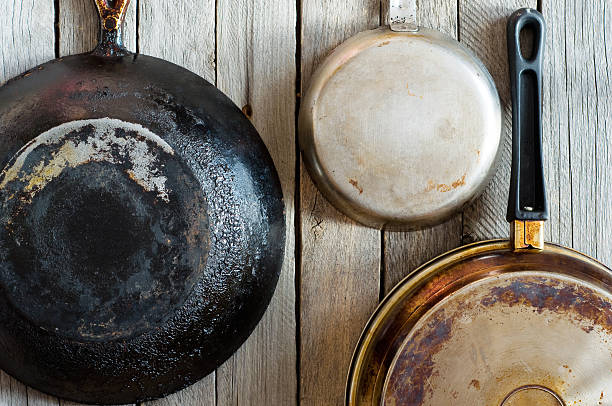
What To Do With Old Pots And Pans?
When considering what to do with old pots and pans, there are several environmentally friendly and practical options to explore.
1. Donate To Local Charities

Donating old pots and pans to local charities is an excellent way to give them a second life while helping those in need. Many charitable organizations, such as shelters, community centers, and food banks, gladly accept kitchenware donations to support their programs.
By donating your old cookware, you’re not only decluttering your own space but also providing essential tools for individuals and families who may be facing financial hardships or transitioning to new living situations.
Your donation can enable them to prepare nutritious meals and improve their quality of life. Before donating, it’s a good idea to ensure that the pots and pans are clean and in usable condition.
Contact local charities to inquire about their specific donation guidelines and drop-off locations, or arrange for a pickup if available. Your gesture of kindness can make a meaningful difference in someone else’s life while promoting a sense of community and solidarity.
2. Pots And Pans As Decorations
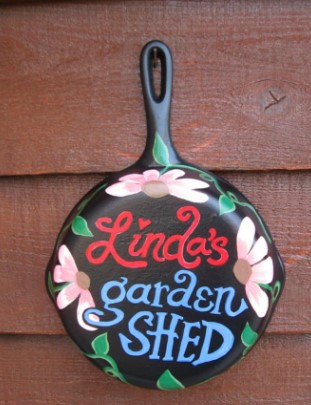
Repurposing old pots and pans as decorative elements can add character and charm to your living space while giving them a new lease on life.
One creative option is to hang them on the walls of your kitchen or dining area, creating an eye-catching display that also serves as functional storage for other kitchen utensils or plants.
You can arrange them in a visually appealing pattern or mix and match different sizes and styles for a eclectic look. Consider using old pots and pans as centerpiece containers for floral arrangements or as unique holders for candles or other decorative items.
If you have particularly ornate or antique cookware, they can become focal points on shelves or side tables, showcasing their beauty and history. By incorporating old pots and pans into your home decor, you’re not only adding personal touches to your space but also reducing waste and embracing sustainability in your design choices.
3. Donate To Food Shelters
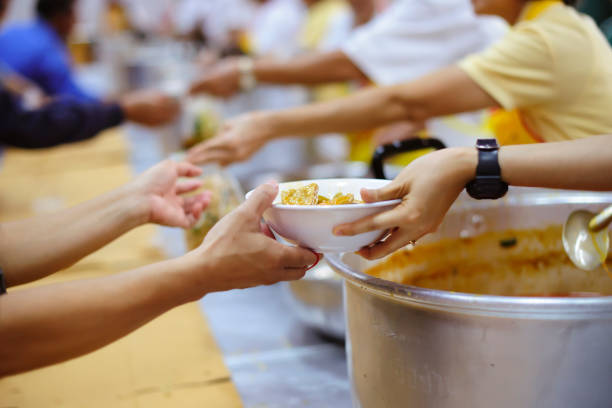
Donating old pots and pans to food shelters is a practical and compassionate way to support their mission of providing meals to those in need.
Cookware is an essential tool for food shelters and soup kitchens to prepare nutritious meals efficiently and in large quantities. By donating your old pots and pans, you’re directly contributing to their ability to serve meals to individuals and families facing food insecurity.
Before donating, it’s a good idea to reach out to the food shelter or soup kitchen to inquire about their specific needs and preferences. Some organizations may have guidelines regarding the types or sizes of cookware they can accept, so it’s important to check in advance.
Consider cleaning and sanitizing the cookware before donation to ensure it’s in good condition and ready for immediate use. Your donation can make a meaningful difference in the lives of those served by food shelters, providing them with the tools they need to cook nutritious meals and offering a sense of comfort and support during challenging times.
4. Rehome Old Kitchenware
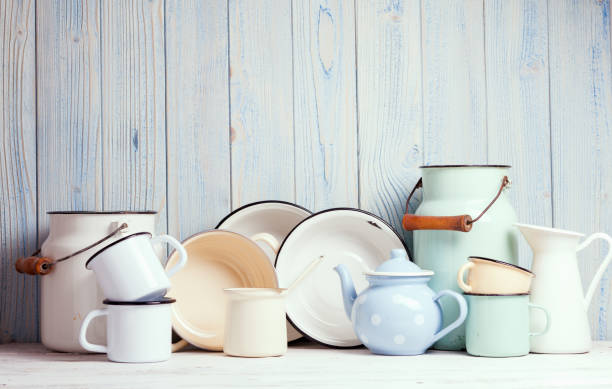
Rehoming old kitchenware is a thoughtful and sustainable approach to dealing with unwanted pots and pans.
Instead of letting them collect dust in storage or ending up in a landfill, consider giving them to friends, family members, or neighbors who may be in need of kitchen essentials. This direct form of rehoming not only benefits someone else but also fosters a sense of community and sharing.
You can also utilize online platforms such as social media groups, neighborhood forums, or online marketplaces to offer your old kitchenware to those who might be interested.
Another option is hosting a kitchenware swap party where individuals can exchange items they no longer need for ones they do, creating a fun and eco-friendly way to refresh kitchen supplies.
By rehoming old kitchenware, you’re extending the lifespan of these items, reducing waste, and spreading goodwill within your community.
5. Reuse Old Cookware For Camping

Reusing old cookware for camping is a practical and sustainable option that allows you to extend the life of your pots and pans while enjoying outdoor adventures.
Instead of purchasing new camping-specific cookware, repurpose your old pots and pans for cooking meals over a campfire or portable camping stove. Since camping cookware needs to be durable and able to withstand high temperatures, many types of kitchenware can easily transition to outdoor use.
Stainless steel or cast iron pots and pans, for example, are excellent choices for camping due to their sturdiness and heat retention properties. Their nonstick surfaces may have worn down over time, making them ideal for cooking over an open flame without worrying about damaging expensive coatings.
By reusing old cookware for camping, you’re not only saving money but also reducing waste by giving these items a new purpose beyond their original use. Just be sure to clean and pack them properly before heading out on your camping trip, and you’ll be all set to enjoy delicious meals in the great outdoors without the need for new equipment.
6. Sell Them Online

Selling old pots and pans online can be a convenient way to declutter your kitchen while also earning some extra money.
There are various online platforms, such as auction sites like eBay, classified ad websites like Craigslist, or dedicated marketplace platforms like Facebook Marketplace or Etsy, where you can list your cookware for sale.
Before listing your items, it’s essential to clean them thoroughly and accurately describe their condition, including any signs of wear or damage. High-quality photos can also help attract potential buyers and showcase the features of the pots and pans.
Consider pricing your items competitively based on their condition, brand, and market value to increase the likelihood of a successful sale.
Selling old cookware online not only gives them a new home but also allows others to benefit from their continued use while providing you with a bit of extra cash in return.
7. Bring Old Cookware To Metal Recycling Facilities
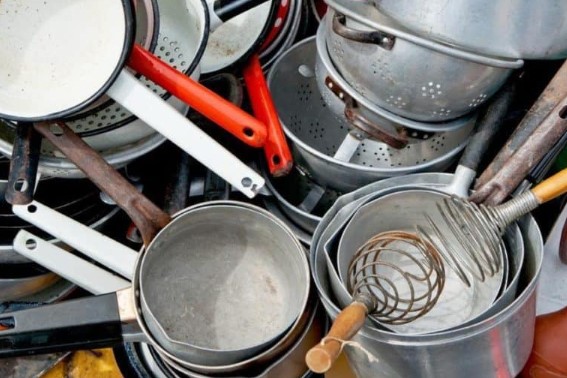
Bringing old cookware to metal recycling facilities is an environmentally responsible way to dispose of pots and pans that are no longer usable or suitable for donation or resale.
Metal recycling facilities specialize in processing various types of scrap metal, including aluminum, stainless steel, and cast iron, which are commonly used materials in cookware manufacturing.
By recycling your old cookware, you’re diverting it from the landfill and allowing it to be repurposed into new products, reducing the need for virgin materials and minimizing environmental impact.
Before taking your cookware to a recycling facility, it’s advisable to check with them about any specific requirements or guidelines they may have for accepting metal items. Some facilities may require cookware to be clean and free of any non-metal components, such as plastic handles or coatings, while others may accept them as-is.
By responsibly recycling your old cookware, you’re contributing to the circular economy and helping to conserve valuable resources for future generations.
8. Return To The Company
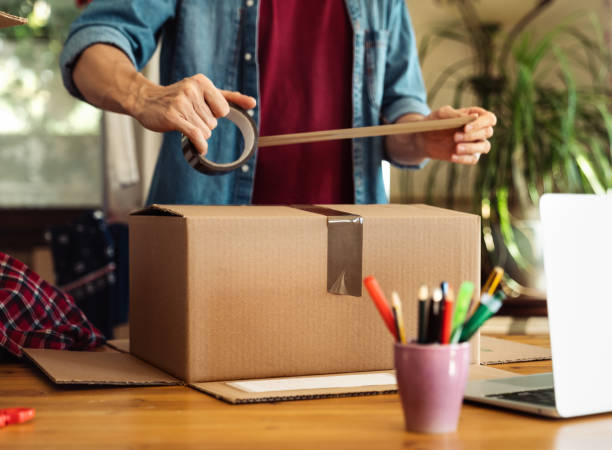
Returning old cookware to the company from which it was purchased can be an option, especially if the company has a take-back or recycling program in place.
Some cookware manufacturers and retailers offer recycling initiatives where they accept old pots and pans for proper disposal or recycling. These programs are often part of their sustainability efforts to reduce waste and promote responsible product lifecycle management.
Before returning your old cookware to the company, it’s advisable to check their website or contact their customer service to inquire about any available recycling options or take-back programs.
They may provide instructions on how to return the items or direct you to designated drop-off locations. By returning old cookware to the company, you’re ensuring that it is disposed of or recycled in an environmentally conscious manner, contributing to the company’s sustainability goals and reducing the environmental impact of your kitchenware disposal.
9. Sell It To A Collector
Selling old pots and pans to collectors can be a rewarding way to part with your cookware, especially if you have unique or antique pieces that hold historical or aesthetic value.
There are collectors and enthusiasts who appreciate vintage or specialty cookware for its craftsmanship, design, or historical significance. You can reach out to collectors through online marketplaces, forums, or social media groups dedicated to kitchenware collecting.
When selling to collectors, it’s essential to provide detailed descriptions and high-quality photos of your items, highlighting any distinctive features, markings, or historical context.
Researching the market value of similar cookware can also help you set a fair price and attract potential buyers. Keep in mind that collectors may be interested in items that are in good condition or require minimal restoration, so it’s important to accurately disclose any flaws or damage.
Selling old pots and pans to collectors not only gives these items a new home where they’ll be appreciated and preserved but also allows you to connect with fellow enthusiasts who share your passion for cookware history and craftsmanship.
10. Give Old Cookware To Antique Stores
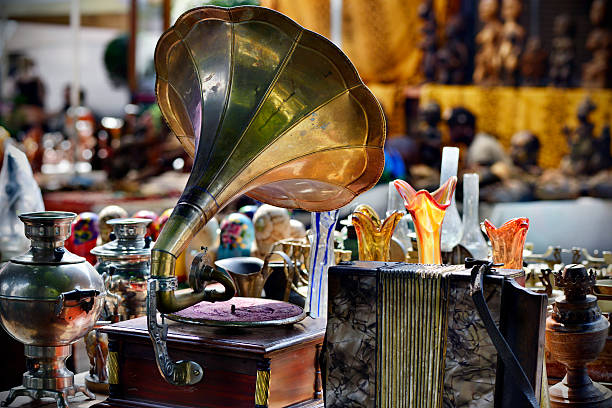
Giving old cookware to antique stores can be an excellent option if your pots and pans have unique or antique qualities that may appeal to collectors or vintage enthusiasts.
Many antique stores specialize in kitchenware from different eras, and they often welcome donations or consignments of items that fit their inventory criteria. Before approaching an antique store, it’s advisable to research local establishments and identify those that have a focus on kitchen collectibles or vintage cookware.
Contact the store to inquire about their policies for accepting donations or consignments, as well as any specific types of cookware they’re interested in. Some antique stores may offer to purchase items outright, while others may prefer to sell them on consignment, splitting the proceeds with you once the item sells.
Be prepared to provide detailed information about the age, condition, and provenance of your cookware to help the store assess its value and suitability for their inventory.
Donating old cookware to antique stores not only gives these items a chance to find new homes with collectors and enthusiasts but also supports local businesses and preserves culinary history and craftsmanship for future generations to appreciate.
4 Things To Know When Reusing Your Old Pots And Pans
When reusing your old pots and pans, there are several important factors to consider to ensure they remain safe and effective for cooking:
1. Inspect for Wear and Damage
Inspecting for wear and damage is a crucial step before reusing old pots and pans. Thoroughly examining the cookware allows you to identify any potential issues that could compromise its safety or functionality.
Look for signs of wear such as scratches, dents, or warping, which may affect cooking performance or heat distribution. Check for damage to handles, lids, or nonstick coatings, as these can impact usability and pose safety hazards.
By conducting a careful inspection, you can make informed decisions about whether the cookware is suitable for continued use, or if it’s time to retire and explore other options for reuse or disposal.
Regular inspections help maintain kitchen safety and ensure that your cooking utensils remain in good condition for enjoyable and worry-free cooking experiences.
2. Clean and Sanitize Properly
Cleaning and sanitizing old pots and pans properly is essential before considering their reuse. Begin by washing the cookware thoroughly with hot, soapy water to remove any lingering food residue, grease, or contaminants.
Pay close attention to crevices, handles, and edges where dirt can accumulate. For stubborn stains or burnt-on food, soaking the cookware in a solution of water and baking soda or using a gentle abrasive cleaner can help loosen grime.
After cleaning, sanitize the pots and pans by boiling them in water for several minutes or running them through a dishwasher cycle, ensuring any remaining bacteria or germs are effectively eliminated.
Proper cleaning and sanitization not only ensure the cookware is safe for cooking but also help maintain its longevity and performance.
3. Consider Material and Compatibility
When reusing old pots and pans, it’s crucial to consider their material and compatibility with your cooking needs. Different materials have distinct properties and are suitable for specific cooking methods.
For example, stainless steel and cast iron are durable options that offer excellent heat retention and versatility, making them ideal for a wide range of dishes and cooking techniques.
Nonstick cookware, on the other hand, provides easy food release and requires less oil for cooking, but it may not be suitable for high-heat cooking or metal utensils. Consider the compatibility of the cookware with your stove type, such as gas, electric, or induction, to ensure optimal performance.
By carefully evaluating the material and compatibility of your old pots and pans, you can make informed decisions about their reuse and ensure they meet your cooking needs safely and effectively.
4. Evaluate Nonstick Coatings
When reusing old pots and pans, it’s crucial to evaluate the condition of any nonstick coatings they may have. Over time, nonstick coatings can deteriorate, potentially releasing harmful chemicals into food and affecting cooking performance.
Carefully inspect the cookware for signs of peeling, scratching, or flaking, as these indicate that the coating may be compromised. If you notice any damage to the nonstick surface, it’s safer to avoid using the cookware for cooking purposes.
Alternatively, consider using the pots and pans for nonstick-coating-safe tasks such as storing dry ingredients or organizing kitchen utensils. By evaluating the condition of nonstick coatings, you can ensure the safety and effectiveness of your old pots and pans for reuse in the kitchen.
Frequently Asked Questions (FAQs) – What To Do With Old Pans And Pots
How can I repurpose my old pans and pots to create innovative kitchen décor?
Explore creative ways to upcycle your old cookware into decorative items, adding charm and personality to your kitchen space.
What eco-friendly options are available for recycling my old pans and pots?
Discover environmentally responsible methods to recycle your old cookware, minimizing waste and contributing to a greener planet.
Can I donate my old pans and pots to charitable organizations or community kitchens?
Learn about opportunities to give back to your community by donating your gently used cookware to those in need, spreading joy through cooking.
How can I transform my old pans and pots into unique gardening containers?
Find out how to turn your old cookware into stylish planters, adding a touch of greenery to your indoor or outdoor spaces.
Are there any creative DIY projects using old pans and pots that I can try at home?
Explore exciting DIY ideas to breathe new life into your old cookware, unleashing your inner artist and showcasing your craftsmanship.
Can I repurpose my old pans and pots for children’s art and craft activities?
Discover fun and educational ways to involve your kids in repurposing old cookware for art projects, fostering creativity and resourcefulness.
How can I use my old pans and pots to create homemade candles or soap molds?
Learn how to repurpose your old cookware into molds for crafting homemade candles or soaps, adding a personal touch to your self-care routine.
Are there any local community initiatives or workshops for repurposing old pans and pots?
Connect with like-minded individuals and participate in community-driven initiatives or workshops focused on repurposing old cookware, fostering collaboration and creativity.
Can I repurpose my old pans and pots for outdoor cooking or camping adventures?
Explore innovative ways to repurpose your old cookware for outdoor cooking or camping trips, enhancing your culinary experiences in nature.
How can I turn my old pans and pots into unique conversation pieces for dinner parties or gatherings?
Discover imaginative ways to repurpose your old cookware into conversation-worthy pieces, adding character and flair to your dining experiences.
Conclusion
In conclusion, determining what to do with old pans and pots involves thoughtful consideration of various factors such as their condition, material, and potential for reuse or recycling.
Whether opting to repurpose them for creative DIY projects, donating them to charitable organizations, recycling them at designated facilities, or responsibly disposing of them, individuals can contribute to reducing waste and environmental impact while also potentially benefiting others.
By exploring these options and making informed decisions, we can ensure that our old cookware finds new life and purpose, embodying the principles of sustainability and responsible consumption.